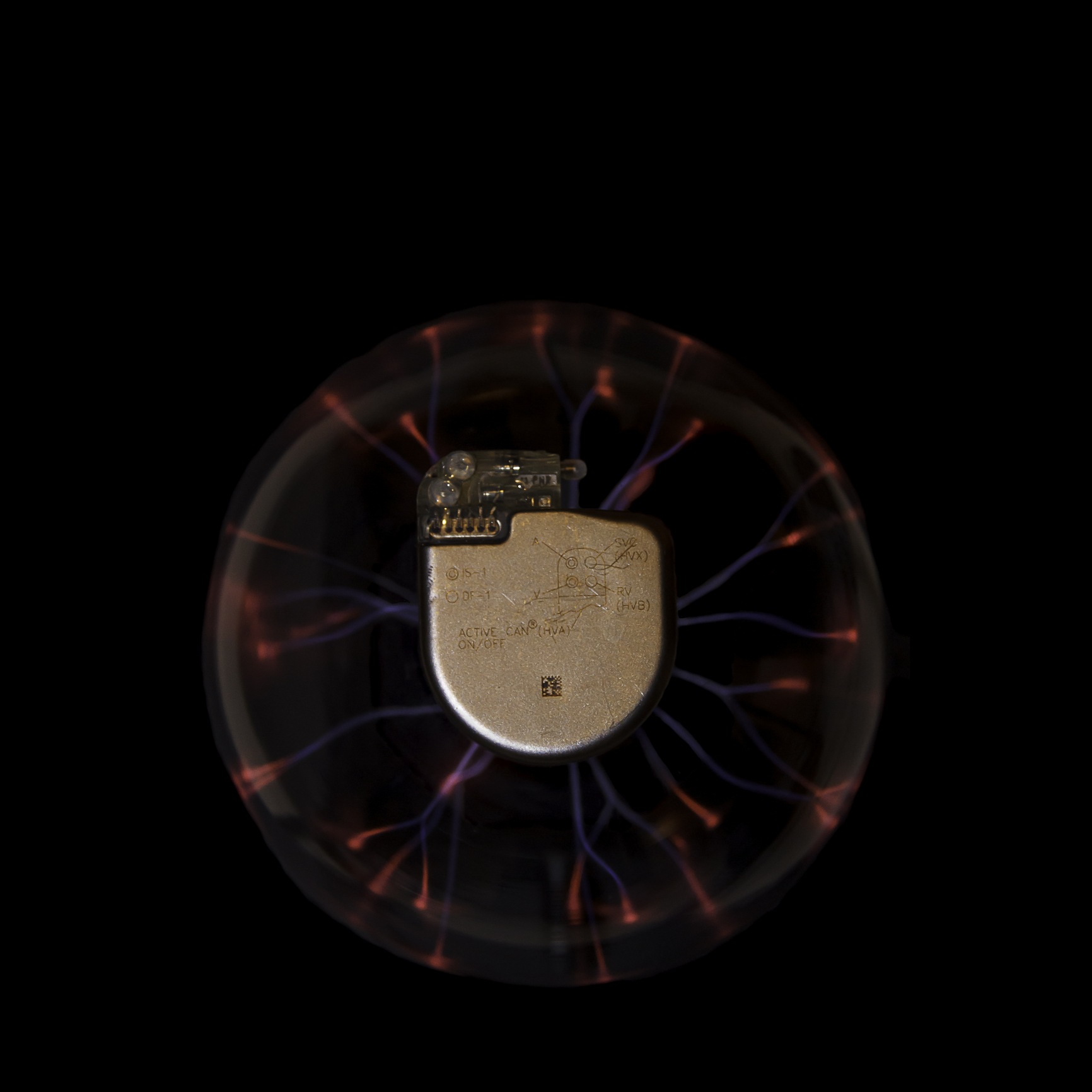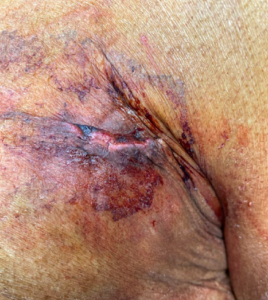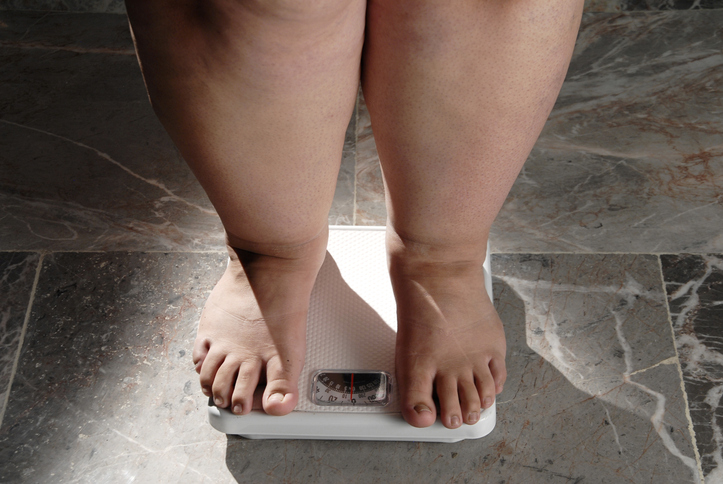
Editor’s Note: This article was co-written by Luai Madanat, MD, of the William Beaumont Hospital in Royal Oak, Mich. DocWire News Editorial Board member Nishaki Mehta, MD, in addition to her work in the Department of Cardiology at William Beaumont Hospital, is also an associate professor of medicine at Oakland University School of Medicine in Rochester, MI, and adjunct faculty at the University of Virginia in Charlottesville.
The use of cardiac implantable electronic devices (CIED) has exponentially increased in recent years with an estimated 3 million pacemakers (PM) and 200,000 implantable cardioverter defibrillators (ICD) inserted annually worldwide.1 One of the most feared complications following device implantation is pocket site infections which could lead to catastrophic medical and financial consequences.2 Device pocket hematomas (PH) are well known to increase the risk of infection with the REPLACE registry demonstrating a 20-fold higher chance of developing infections.3 Post-procedural surgical pocket hematomas (PH) following CIED insertion account for approximately one quarter of all early repeat procedures post implantation.4 Many studies have been conducted in an attempt to identify modifiable mitigation strategies and periprocedural interventions to reduce the development of pocket hematomas following CIED implantation.
Anticoagulation Risk
Due to the nature of the cardiac conditions managed by CIED implantation, an estimated 14-35% of patients are on anticoagulation prior to undergoing the procedure.5 Several studies have evaluated the risk of developing PH with heparin bridging as opposed to uninterrupted warfarin therapy in patients on anticoagulation. The milestone BRUISE Control trial, a PRCT involving 681 patients taking long term warfarin therapy, reported an incidence of clinically significant hematomas (CSH) in 3.5% of patients in the continued warfarin arm vs. 16% in the heparin bridging group (P<0.001).5 Results of this study were later validated by several cohorts and meta-analyses demonstrating increased risk of pocket hematomas with heparin bridging compared with warfarin with no difference in rates of thromboembolic strokes between the two groups.6-10 These studies have conclusively demonstrated no role of heparin periprocedurally. Whether and when prophylactic heparin post procedure should be resumed remains a matter of further investigation. Risk of bleeding with DOACs was also compared to warfarin. No significant difference was found between warfarin Vs DOACs in terms of clinically significant hematomas.11-13 A representative image of a pocket hematoma three weeks after device implantation in a patient on warfarin for mechanical valve is shown (see Image). INR around this time was 4.1. Continued vs interrupted anticoagulation with DOACs does not significantly differ in terms of bleeding risk and PH formation as demonstrated by the BRUISE CONTROL 2 trial.14

FIGURE. Device Pocket Hematoma
Antiplatelet Regimens
Although aspirin monotherapy failed to demonstrate increased risk, the use of dual antiplatelet therapy (DAPT) consistently provided evidence of higher rates of PH.15-18 In one observational study involving 935 participants on antiplatelet therapy undergoing CIED implantation, rates of PH formation were higher with continuous clopidogrel therapy (18.3%) compared to interrupted clopidogrel (10.5%) and no clopidogrel therapy (7.9%) (P<0.001). The use of aspirin monotherapy did not increase the risk of hematoma.15 In another retrospective analysis of 1388 patients, dual antiplatelet therapy with aspirin and clopidogrel significantly increased the risk of bleeding compared to no antiplatelet therapy (7.2% vs. 1.6%; P=0.004), while aspirin monotherapy was not associated with higher risk of PH (3.9% vs. 1.6%; P=0.078).16 Risk of bleeding with other P2Y12 was addressed in a study involving 1100 undergoing CIED implantation. Ticagrelor was the strongest predictor of serious bleeding (OR=22.25; 95% CI, 4.56 to 108.46) and was associated with 21-fold increase in risk of bleeding compared to 7-fold increase with the use of clopidogrel.17 The risk of PH following CIED implantation with the use of prasugrel specifically has not been studied previously. However, it is presumed to have comparable rates of bleeding to ticagrelor.18
Triple Therapy, Triple Threat
Triple antithrombotic therapy with warfarin and DAPT poses a greater risk of PH in patients undergoing CIED implantation when compared to either therapy alone.19 Notaristefano et al, demonstrated higher risk of pocket hematomas with triple therapy (OR=14.1 [95% CI, 3.0 to 66.0]; P=0.001) compared to dual antiplatelet therapy (OR=11.3 [95% CI, 2.9 to 44.2]; P<0.0001) or VKA monotherapy (OR=8.4 [95% CI, 2.0 to 34.2]; P=0.003).20 As recently reported by Spighi et al, the use of DAPT and heparin bridging were highly predictive for the occurrence of PH in contrast to single antiplatelet or VKA monotherapy.21
A recent comprehensive review by Mehta et al, corroborated the results of previous studies and proposed an algorithm for the management of anticoagulation and antiplatelet therapy in patient’s undergoing CIED implantation. For patients on dual antiplatelet therapy or monotherapy with P2Y12 inhibitors, physicians should weigh the interruption of P2Y12 inhibitor in individuals with high risk of bleeding. The use of warfarin and DOACs in patients with moderate to high risk of thromboembolic events (defined as over 5%/year) should be continued peri-operatively, as was evaluated in the BRUISE control trials. In patients on triple therapy, serious consideration of withholding either the P2Y12 inhibitor or anticoagulant should be given.22
Intra-operative Strategies to Reduce Hematomas
Several intraoperative interventions have been introduced to reduce risk of hematoma formation in patients undergoing CIED implantation but there is no robust evidence to support routine use of these practices. Studies on intraoperative use of epinephrine,23 fibrin sealant,24 mixture of thrombin and collagen (D-hemostat)25 and tranexamic acid (TXA)26 provide weak evidence insufficient to change clinical practice. A novel hemostatic gelatin sponge designed to initiate the clotting cascade reduced the rate of hematoma formation compared to standard care although recipients were more likely to have higher serum IgE and C-reactive protein with unclear clinical implications.27
Do Pressure Dressings Really Work?
Pressure dressings have been traditionally used to decreased risk of hematoma and seroma formation in surgeries involving areas of the back, chest wall and abdomen. Conventional pressure dressings administered over the chest and torso can only deliver a pressure average of 6.6mmHg which is insufficient to prevent hematoma formation.27,28 Several external compression devices have also been investigated. The STOPHEMATOMA study investigated the effect of a synthetic expandable vest on the development of hematomas in patients undergoing implantable CIEDs. No difference was found in terms of clinically significant hematoma formation.29 The Premofix™ PM/ICD and Pocket Pal II™ are another external compression devices proposed to reduce post-operative PH. However, sufficient clinical data is lacking.27 The major disadvantages of all current external compression devices is the lack of wound visibility and thus a feedback loop that allows appropriate pressure titrations to prevent underlying tissue necrosis and injury. There is an open market to develop better devices to combat post-operative bleeding especially in high risk patients to reduce post procedural interruption of anticoagulants and antiplatelet agents.
Despite the clinical significance of pocket hematomas, studies remain to adopt different definitions of ‘’hematoma’’ which could generate misleading results and misinterpretation of the clinical value of intervention being evaluated.22 CSH defined by the BRUISE CONTROL trial as ‘post procedure hematoma requiring further surgery, prolongation of hospitalization over 24 hours or interruption of anticoagulation’ is appropriate and encompasses all aspects of bleeding that might affect patient outcomes.5 In addition, there is no consistent consensus on appropriate CIED wound healing. The Patient and Observer Scar Assessment Scale (POSAS) and the Manchester Scar Scale (MSS) are most commonly utilized in surgical literature to assess scar healing due to their interobserver reliability and validity across several studies and their ability to accurately reflect patient satisfaction with scar quality.30-32 A durometer is a tool used to determine skin hardness by measuring the skin’s resistance against a force delivered through an indenter within the device.33,34 Several studies have demonstrated that durometers are a highly reliable, convenient, and painless method of measuring skin resistance with higher readings indicating reduced skin pliability.35-37 We recently published a recent prospective observational case-control study involving 92 patients aimed to evaluate the use of durometers in assessing wound healing in patients who underwent CIED implantation. Higher durometer readings were recorded at the surgical site at 1 day and 2 weeks post-operatively when compared to the baseline reading. (P=0.004 and P<0.001, respectively).38 Serial durometer measurements could be of value in early detection of pocket hematomas and device infections.
Conclusions
An abundance of strategies to reduce CIEDs pocket hematomas have been proposed in literature but there is a lot of room for further research to improve patient care. The strongest body of evidence arises from the management of antithrombic and antiplatelet therapy periprocedurally. Appropriate patient selection based on individual risk factors, the timing of the procedure and type of surgical pocket performed, and shared decision making with the patient should be considered imperative factors that contribute to the development of clinically significant pocket hematomas.
References
- Lind, Keith (2017) Understanding the market for implantable medical devices. AARP Insights, August 2017. Pages 1-15.
- Sohail MR, Henrikson CA, Braid-Forbes MJ, et. al. Mortality and Cost Associated With Cardiovascular Implantable Electronic Device Infections. Arch Intern Med 2011; 171: pp. 1821-1828.
- Uslan DZ, Gleva MJ, Warren DK, et al. Cardiovascular implantable electronic device replacement infections and prevention: results from the REPLACE Registry. Pacing Clin Electrophysiol. 2012;35:81-87.
- Udo EO, Zuithoff NP, van Hemel NM, et al. Incidence and predictors of short- and long-term complications in pacemaker therapy: the FOLLOWPACE study. Heart Rhythm. 2012;9(5):728-735.
- Birnie DH, Healey JS, Wells GA, et al. Pacemaker or defibrillator surgery without interruption of anticoagulation. N Engl J Med. 2013;368:2084-2093.
- Robinson M, Healey JS, Eikelboom J, et. al. Postoperative low-molecular-weight heparin bridging is associated with an increase in wound hematoma following surgery for pacemakers and implantable defibrillators. Pacing Clin Electrophysiol. 2009;32:378–338.
- Sticherling C, Marin F, Birnie D. Antithrombotic management in patients undergoing electrophysiological procedures: a European Heart Rhythm Association (EHRA) position document endorsed by the ESC Working Group Thrombosis, Heart Rhythm Society (HRS), and Asia Pacific Heart Rhythm Society (APHRS). Europace. 2015;17:1197–1214.
- Ghanbari H, Phard WS, Al-Ameri H, et. al. Meta-analysis of safety and efficacy of uninterrupted warfarin compared to heparin-based bridging therapy during implantation of cardiac rhythm devices. Am J Cardiol. 2012;110:1482-1488.
- Feng L, Li Y, Li J, et al. Oral anticoagulation continuation compared with heparin bridging therapy among high risk patients undergoing implantation of cardiac rhythm devices: a meta-analysis. Thromb Haemost. 2012;108:1124-1131.
- Du L, Zhang Y, Wang W, et al. Perioperative anticoagulation management in patients on chronic oral anticoagulant therapy undergoing cardiac devices implantation: a meta-analysis. Pacing Clin Electrophysiol. 2014;37:1573-1586.
- Kosiuk J, Koutalas E, Doering M, et al. Treatment with novel oral anticoagulants in a real-world cohort of patients undergoing cardiac rhythm device implantations. Europace. 2014;16(7):1028-1032.
- Jennings JM, Robichaux R, McElderry HT, et al. Cardiovascular implantable electronic device implantation with uninterrupted dabigatran: comparison to uninterrupted warfarin. J Cardiovasc Electrophysiol. 2013;24(10):1125-1129. doi:10.1111/jce.12214
- Leef GC, Hellkamp AS, Patel MR, et al. Safety and Efficacy of Rivaroxaban in Patients With Cardiac Implantable Electronic Devices: Observations From the ROCKET AF Trial. J Am Heart Assoc. 2017;6(6):e004663.
- Birnie DH, Healey JS, Wells GA, et al. Continued vs. interrupted direct oral anticoagulants at the time of device surgery, in patients with moderate to high risk of arterial thrombo-embolic events (BRUISE CONTROL-2). Eur Heart J. 2018; 39: pp. 3973-3979.
- Kutinsky IB, Jarandilla R, Jewett M, Haines DE. Risk of hematoma complications after device implant in the clopidogrel era. Circ Arrhythm Electrophysiol. 2010;3(4):312-318. doi:10.1161/CIRCEP.109.917625
- Tompkins C, Cheng A, Dalal D, et al. Dual antiplatelet therapy and heparin “bridging” significantly increase the risk of bleeding complications after pacemaker or implantable cardioverter-defibrillator device implantation. J Am Coll Cardiol. 2010;55(21):2376-2382.
- Sławek-Szmyt S, Araszkiewicz A, Grygier M, et al. PACE DRAP: a simple score for predicting significant bleeding complications after cardiac implantable electronic device surgery. Pol Arch Intern Med. 2020;130(3):206-215. doi:10.20452/pamw.15180
- Nichols CI, Vose JG. Incidence of Bleeding-Related Complications During Primary Implantation and Replacement of Cardiac Implantable Electronic Devices. J Am Heart Assoc. 2017;6(1):e004263. Published 2017 Jan 22. doi:10.1161/JAHA.116.004263
- Ghanbari H, Nallamothu BK, Wang Y, Curtis JP. Antithrombotic therapy and outcomes after ICD implantation in patients with atrial fibrillation and coronary artery disease: an analysis from the National Cardiovascular Data Registry (NCDR)®. J Am Heart Assoc. 2015;4(2):e001331. Published 2015 Jan 30. doi:10.1161/JAHA.114.001331
- Notaristefano F, Angeli F, Verdecchia P, et al. Device-Pocket Hematoma After Cardiac Implantable Electronic Devices. Circ Arrhythm Electrophysiol. 2020;13(4):e008372. doi:10.1161/CIRCEP.120.008372
- L Spighi, F Notaristefano, R Annunziata, et al. P1187 Pocket-Hematoma after cardiac implantable electronic devices surgery: a single centre study, EP Europace. 2020;22(1):euaa162.302.
- Mehta N, Doerr K, Skipper A, Rojas-Pena E, Dixon S, Haines D. Current strategies to minimize postoperative hematoma formation in patients undergoing cardiac implantable electronic device implantation: A review [published online ahead of print, 2020 Nov 23]. Heart Rhythm. 2020;S1547-5271(20)31069-9. doi:10.1016/j.hrthm.2020.11.017
- Ilov N, Ilov N, Nechepurenko A, et al. Arguments to Apply Epinephrine for Pocket Hematoma Reduction. The MAITRE Study. Journal of Atrial Fibrillation. 2016;9(1):1391. Published 2016 Jun 30. doi:10.4022/jafib.1391
- Milic DJ, Perisic ZD, Zivic SS, et al. Prevention of pocket related complications with fibrin sealant in patients undergoing pacemaker implantation who are receiving anticoagulant treatment. Europace. 2005;7(4):374-379. doi:10.1016/j.eupc.2005.03.007
- Ohlow MA, Buchter B, Brunelli M, Lauer B, Schreiber M, Geller JC. Prävention von Taschenkomplikationen nach Implantation von Herzrhythmusdevices. D-Stat Hemostat™ im Vergleich mit konventioneller Vakuumdrainage [Prevention of pocket-related complications following heart rhythm device implantation. D-Stat Hemostat™ versus vacuum drainage]. Herzschrittmacherther Elektrophysiol. 2015;26(1):45-51. doi:10.1007/s00399-015-0349-7
- Beton O, Saricam E, Kaya H, et al. Bleeding complications during cardiac electronic device implantation in patients receiving antithrombotic therapy: is there any value of local tranexamic acid?. BMC Cardiovasc Disord. 2016;16:73. Published 2016 Apr 22. doi:10.1186/s12872-016-0251-1
- Awada H, Geller JC, Brunelli M, Ohlow MA. Pocket related complications following cardiac electronic device implantation in patients receiving anticoagulation and/or dual antiplatelet therapy: prospective evaluation of different preventive strategies. J Interv Card Electrophysiol. 2019;54(3):247-255. doi:10.1007/s10840-018-0488-y
- Kaimal A, Phillip J, Greenberg J. How much pressure does a pressure dressing press? Quantifying the effects of a pressure dressing on the post-cesarean section incision. Amer J Obstet Gynecol. 2004;191;52.
- Turagam M.K., Nagarajan D.V., Bartus K., et. al.: Use of a pocket compression device for the prevention and treatment of pocket hematoma after pacemaker and defibrillator implantation (STOP-HEMATOMA-I). J Interv Card Electrophysiol. 2017; 49: pp. 197-204.
- Van der Wal M, Bloemen M, Verhaegen P, et al. Objective color measurements: clinimetric performance of three devices on normal skin and scar tissue. J Burn Care Res. 2013;34(3):e187-e194. doi:10.1097/BCR.0b013e318264bf7d
- Beausang E, Floyd H, Dunn KW, Orton CI, Ferguson MW. A new quantitative scale for clinical scar assessment. Plast Reconstr Surg. 1998;102(6):1954-1961. doi:10.1097/00006534-199811000-00022
- Draaijers LJ, Tempelman FR, Botman YA, et al. The patient and observer scar assessment scale: a reliable and feasible tool for scar evaluation. Plast Reconstr Surg. 2004;113(7):1960-1967. doi:10.1097/01.prs.0000122207.28773.56
- Fearmonti R, Bond J, Erdmann D, Levinson H. A review of scar scales and scar measuring devices. Eplasty. 2010;10:e43. Published 2010 Jun 21.
- Pittar N, Winter T, Falland-Cheung L, Tong D, Waddell JN. Scalp simulation – A novel approach to site-specific biomechanical modeling of the skin. Journal of the Mechanical Behavior of Biomedical Materials. 2018;77:308-313.
- Cuaderes E, Khan MM, Azzarello J, Lamb WL. Reliability and limitations of the durometer and PressureStat to measure plantar foot characteristics in Native Americans with diabetes. J Nurs Meas. 2009;17(1):3-18.
- Choh CT, Wall ML, Brown MD, Nicolson AM, Simms MH. Use of durometry in assessment of venous disease. Phlebology. 2010;25(2):94-99. doi: 10.1258/phleb.2009.008088 [doi].
- Moon KW, Song R, Kim JH, Lee EY, Lee EB, Song YW. The correlation between durometer score and modified Rodnan skin score in systemic sclerosis. Rheumatol Int. 2012;32(8):2465-2470. doi: 10.1007/s00296-011-1993-9 [doi].
- Mehta NK, Morgaenko K, Haines D, et al. Baseline incision characteristics and early scar maturation indices following cardiac device implantation. J Arrhythm. 2021;37(2):400-406. Published 2021 Jan 19. doi:10.1002/joa3.12464







 © 2025 Mashup Media, LLC, a Formedics Property. All Rights Reserved.
© 2025 Mashup Media, LLC, a Formedics Property. All Rights Reserved.